DE&I in Pharma Sales & Marketing: ‘While There’s Work, There’s Promise’
Senior leaders in pharma, healthcare marketing and communications, and advertising got together to discuss the progress and lingering roadblocks in advancing diversity, equity, and inclusion strategies in the life sciences—where the common thread seems clear: the messenger matters.

On June 29, a panel of five professionally and culturally diverse executives convened in a virtual, closed roundtable to discuss diversity, equity, and inclusion (DE&I) relative to the pharma industry’s sales and marketing efforts. Experts from both pharma and the agencies they enlist to tackle creative contributed to an enlightening discussion.
Topics discussed included representation among various minorities within sales and creative positions—“the messenger matters;” how pharma companies can build DE&I into their overall strategy; how the approach to underserved communities requires sincere acknowledgement, both in advertising/marketing and clinical trial recruitment; and how the industry can communicate to the healthcare professional (HCP) and patient population about preventative measures to help people live well and longer. The interaction between the panelists yielded a robust and passionate discussion.
The following is a recap of the conversation, edited for length and clarity. View video excerpts from this roundtable on topics including Pharma's Role in Life Expectancy in Minorities, Zip Codes and Health Equity, Pharma Sales Team Demographics, The Messenger Matters, and Clinical Trials Representation.
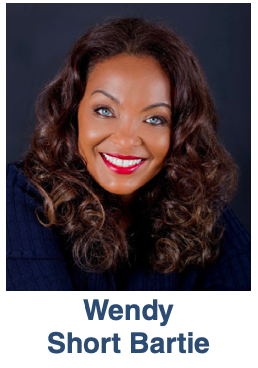
Wendy Short Bartie, senior vice president and head, US oncology, Bristol Myers Squibb: The US is composed of tens of thousands of zip codes, and demographics can change dramatically within a five-mile radius. How are pharma companies liaising with HCPs and patients to address some of the inherent issues that we’re facing in the context of health equity, and should we be integrating health equity into our sales and marketing efforts?
Gena Pemberton, chief diversity, equity, and inclusion officer, Omnicom Health Group: Absolutely, pharma companies could be doing a better job of focusing in on a higher level of detail and getting it down to five miles—or even two miles. We’ve been painting with a wide brush, but the only way that we’re going to make a dent as it relates to health equity is for us to start building out plans that are very specific to the areas we’re serving.
We need to start to realize that within a neighborhood there might be a more seasoned generational area vs. a younger one, or a Black neighborhood vs. a Hispanic neighborhood. Otherwise, we’re not going to make an impact as it relates to getting our HCPs to really understand the patient needs if they’re simply applying it to what they believe the majority is.
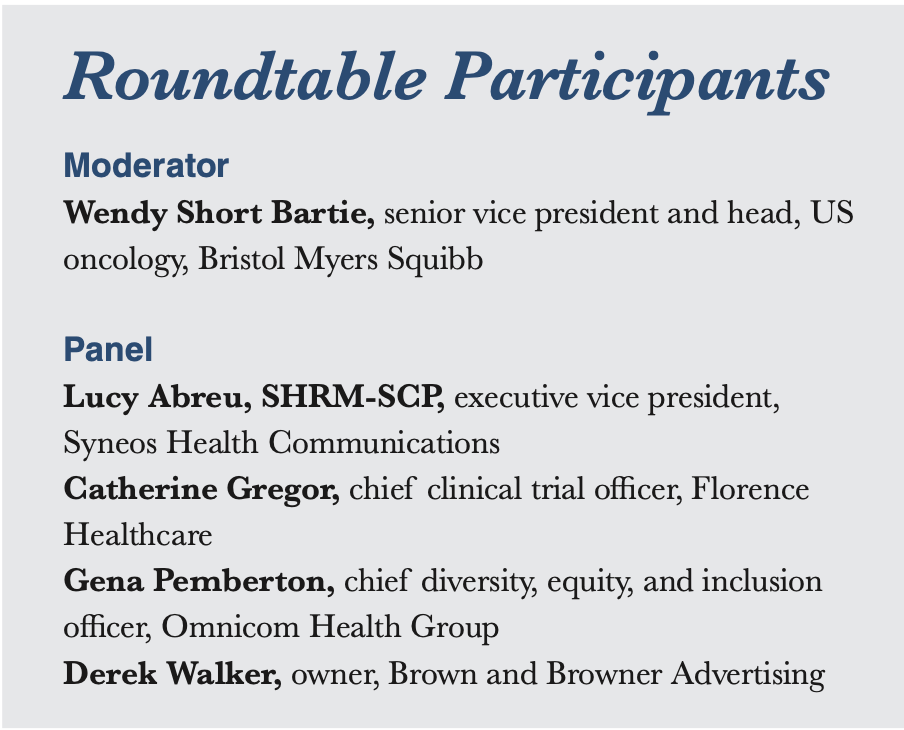
Lucy Abreu, SHRM-SCP, executive vice president, Syneos Health Communications: The killing of George Floyd in 2020 awoke a lot of companies and inspired them to take measurable action. We have to remain vigilant in our programming, our initiatives, and our measurable outcomes because there is so much at stake.
Starting with clinical trial diversity, all the way to our commercialization strategy, we have significant education, trainings, and cross-cultural relationships that need to be established and fortified in order for us to do this correctly and have long-term impact. We are not monolithic communities, and too often we get caught up in not having that right representation on our pharma teams to even understand the nuances in care that are represented by diverse zip codes. That goes beyond racial, ethnic, sexual orientation or expression. There are so many layers and dimensions of diversity that we have to be prepared for in order to really improve the healthcare ecosystem.
One of the things we’ve done at Syneos Health is pulling together panels like this—safe spaces with different members of our healthcare community who can speak from personal and professional experience, what it means to care for others, to create clinical trials where we are raising our hand a bit more often because we trust the messenger and the process.

Derek Walker, owner, Brown and Browner Advertising: Zip codes in the Black, Hispanic, or some certain Asian communities are multi-leveled. It’s not simply lower class, it’s mixed, because we tend to stay in our community—it’s a safe place.
In my zip code, you have people who are making $12,000 to $14,000 a year and people who are making $500,000 to $1 million a year living in proximity. In advertising and marketing, we talk about zip codes like they’re separate groups, but they’re actually layered inside the zip code.
Bartie: At BMS, one of the programs we created several years ago is called “Standing in the Gaap,” which focuses on closing gaps in diagnosis, care, and survival rates among African Americans who were diagnosed with multiple myeloma. We know, unfortunately, that African-American people who are diagnosed with multiple myeloma have disproportionately negative outcomes relative to White patients, and have a high mortality rate.
When it comes to “standing in the gap,” we’re not alone. Other pharma companies have certainly committed to developing patient education materials in multiple languages that are culturally relevant. Many came out in 2020 to talk about special DE&I and health equity commitments around disease awareness, improving access to care, and advocating for policies that promote health equity.
But there have to be sustainable, scalable solutions that we can benefit from not just for a couple of years, but decades, that can have generational impact on improving quality of care.
Bartie: The messenger matters. When we’re communicating or marketing to women or people of color, it’s been proven time and time again that it’s good for business to have women or people of color in the room bringing insights and sharing important information to ensure that we’re getting it right. But, in terms of representation, only about 20% of creative directors are women, and executive creative directors are even more sparse.
Recently, New York Festivals hosted a two-hour conversation called “Black Madison.” During this conversation, it was indicated that there are less then 10 Black executive creative directors in the entire advertising industry from big holding companies! And there’s only one with a healthcare focus.
How important is it to have diverse creative teams developing creative content in marketing campaigns aimed at specific demographics?
Walker: In the ’70s and ’80s, those numbers were higher. I do not know what happened, but it did—in the early ’90s, African Americans and Hispanics lost representation at the executive creative director level. Having representation is extremely important because without it you miss the nuance of language, culture, and understanding. Before I opened my shop, I had only worked at White agencies. So, we’d throw a doctor in an add in a lab coat, not understanding that the doctor doesn’t carry the credentials in Black and Hispanic communities because of past grievances. When you stick a doctor in a spot to talk to a minority community, that person doesn’t come with clout, they elicit trepidation. And if you don’t know or understand the community or understand the pushback, you won’t know how to frame your message.
Few pharma companies addressed the idea of the Tuskegee experiments and how that impacts a community for decades, or some of the things that were done in North Carolina to Black women. If you don’t own that, then you can’t build credibility, because you’re saying, “Well, we’ll just ignore that part of your history.”
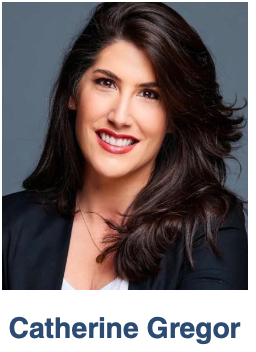
Catherine Gregor, chief clinical trial officer, Florence Healthcare: Early on in my career in a health system, I spent a lot of my time dancing around Tuskegee and trying not to acknowledge it when talking to underrepresented populations, and I learned the hard way that’s not the right way to do that. The best way is to talk about it—talk about the misuse of trust, what we as an industry have learned, and acknowledge we still have lots to learn.
In terms of clinical trial staff, we want people in the room who look like the patients we’re trying to reach. We want to make sure that we have people who are representative of all cultures, all sexual orientations, and all socioeconomic backgrounds because they’re the ones who are able to make genuine connections and establish trust. We can do all the research and experimentation and protocol design we want, but without those patients, we don’t get the approvals and the drugs we need to move science forward.
Pemberton: We’ve instituted a few different things across Omnicom Health Group to ensure we’re getting people to see the work before it goes out and make sure that we’ve got different voices in the room looking at the work product. For example, before any client work goes out that’s related to health equity or servicing a specific demographic, I review the work: any voiceovers, what the creative is, what the copy is, and how we are going to approach the client. We’re at a time now where we have to be very clear and cognizant of how important our language is and how important it is to make sure that we’re delivering inclusive work.
We also instituted our DEI University for every employee to participate in; it was mandatory, composed of four modules of training that included having an inclusive mindset, unconscious bias, antiracism, and how to lead with inclusivity in mind.
This is all part of the culture change that we’re trying to implement within the network, because there’s not this huge influx of Black, Hispanic, and Asian creative directors that are just going to pop up out of nowhere and come into these roles tomorrow. Until we start to build those up and find these people and get them into healthcare, we’ve got to build a world of allies and advocates.
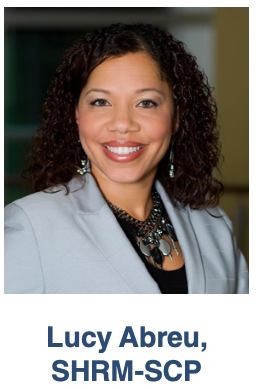
Abreu: We have an opportunity to come together and be a catalyst for change. “Investment” to me is the key word here. Our industry must be willing to make sustainable investments that range from recruiting and retaining a more diverse talent pipeline to upskilling clinical trial investigators and our commercial sales force, to ensure they’re as diverse and cross-culturally trained to cater to an ever-evolving US patient population, and then we’ll be better prepared to develop strategic and culturally appropriate healthcare solutions.
The bottom line is the messenger matters, the talent we have creating the messages and the groups we partner with that have these grassroots relationships with the communities we’re working with, matters. While there’s work, there’s promise, and that motivates me.
Bartie: What should we be doing to make sure that clinical trials in the US reflect the population that we serve? How should we be looking at complex data systems and digital information, big data, to help us improve diversity in clinical trials?
Gregor: Science has made amazing leaps in the last decade for lots of different types of patients. I worked in a large academic medical center where we did innovative research that was potentially lifesaving. However, that research was only available to the patients who lived in my area and were willing to come to my institution and who had the right insurance. The most recent change in Medicaid policy announced in January is huge for clinical trial participants and the ability to enroll patients. From a reimbursement standpoint, it allows hospitals to be empowered to do more work.
The FDA’s most recent guidance issued in April is much more prescriptive in terms of making clinical trials more accessible to the patients who are going to be receiving therapy post-approval. They’re pointing to moving outside of large academic health centers and community health systems and taking clinical trials to places where patients are and where there is an already established level of trust in a particular community. To me, that’s the most exciting thing that has happened this year for moving diversity and representation forward.
Also, the FDA has now said that sponsors are going to be required to think prospectively about how they are going to reach those populations as they are designing their protocol—it cannot be an after-the-fact thought.
There’s a lot of confidence right now. For a long time, there has been a lot of talking individually about diversity and inclusion. But now the industry is talking with a loudspeaker instead of a small microphone. The political climate is right, the science is right, and coming out of COVID-19 we’ve seen what can happen when we look at new ways to reach and motivate communities.
Bartie: At BMS, one of our commitments is focused on diversity in clinical trials. We’ve committed to locate 25% of new US clinical trial research sites in highly diverse communities by the end of this year. We believe that decentralizing clinical trials makes it a lot easier on patients and their families and caregivers to participate. We’ve also seen that the increased use of telemedicine and home healthcare and these decentralized clinical trials have a direct correlation to increase patient compliance and reduce patient dropout of clinical studies. Trials in more communities and reaching more diverse patients allows us to make sure more patients’ voices are heard. But there is still so much work to do in terms of making sure that our clinical trials look like the ever-changing diverse fabric of our society.
Gregor: The role of decentralized trials and technology are a wonderful thing, but we have to make sure that whatever technologies we are building don’t create additional access restrictions to those populations who don’t have internet or mobile devices.
Bartie: Looking at pharmaceutical sales teams, 76% are White. About 13.8% are Hispanic/Latino, Asian 4.8%, Black or African American 3.8%, American Indian/Alaska Natives 0.2%. When you compare those stats against these facts: The ethnicity with the highest prevalence of diabetes is the Hispanic population, the ethnicity with the highest prevalence of cancer is the Black population, you see the disconnect.
Sales teams have traditionally been the tip of the arrow for pharma in terms of developing relationships and exchanging valuable information with HCPs and providing access to important patient education. Are the current teams diverse enough and built to address the issues of race and gender in our chronically underserved communities?
Walker: No. Dear God, the numbers. No, no.
Abreu: Absolutely not. The data says it all. It’s so important for us to look at our data analytics to develop benchmarks if we don’t already have them, and make sure that we do better because there’s so much opportunity.
At the bare minimum, it’s a two-part solution. First is representation, and second is making sure that we create these inclusive workforces that are inviting enough to bring in top talent from these diverse communities, where they have fair opportunities for promotion and are able to do stretch assignments and have a voice at the table. It’s one thing to bring in the talent, it’s another thing to retain the talent.
There is a plethora of studies that show that there’s upward of 30% financial gains that businesses don’t realize by not taking advantage of more inclusive teams, when the numbers show that it positively impacts your bottom line and your patient community. To me, it’s a win-win all the way around.
We have to work closely with our HR teams to make sure that we have diverse hiring managers and participants on hiring panels. We need to know where people are posting our jobs. We need to do a better job of incentivizing employees to share with their network.
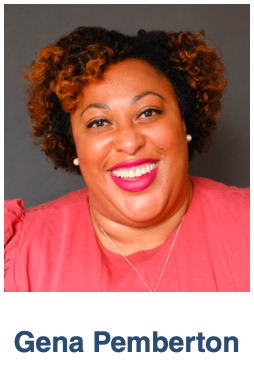
Pemberton: We need to articulate that the way those numbers are situated was how the system was built. This is why we have health disparities—we were never built to be equitable across the industry. We have to change the mindset of what the system is built on as we bring in new people.
Walker: It’s not just about hiring; it’s how you judge success. You bring in a minority salesperson in a system designed for the majority, a Black woman to do pharmaceutical sales in a system designed for White men and women salespeople—and you judge them based on the numbers they sell, but not taking into consideration that when that person shows up, they’re not seen the same. They have a higher hill to climb, but you’re going to judge them the same.
It’s not enough to just hire them. It’s how you measure them and how you retain them.
Bartie: Several months ago, it was reported that Black and Latino people in this country experienced a 2.9 and three-year decline in life expectancy, respectively, in 2020 compared to a 1.2-year decline for White people. In an industry designed to help people live better and improve outcomes, there’s clearly something amiss. It’s apparent that this is a deeply entrenched structural issue. How can pharma companies overcome this obstacle?
Walker: Pharma has to paint the whole picture and speak to everyone. There’s an obligation, and we sometimes have to do what’s best for everybody, even if it costs money. I advise clients, pharmaceutical companies, to take the high road and speak to conditions without attaching a sell to it. When a pharma company decides to lead with something more than “buy our product or service,” it becomes “we care about the community, about us.” Put forth a message that wakes folks up. Address preventative personal health: You’ve got to eat better, exercise, learn how to deal with stress.
In the barber shop, when somebody comes in with prostate cancer, it’s interesting to see how, all of a sudden, everybody’s got questions about prostate exams. There are conversations to be had before people get diagnosed.
Gregor: We need to message at a time when a patient isn’t a patient, when they’re still just a person before the disease presents itself. I run into that all the time with clinical trials. The first time a patient hears about a clinical trial, unfortunately, is usually when they’re sick. I have to educate them on what clinical trials are and what they mean for their condition. If we started to talk about the preventative measures and the dynamics of health as a group before that person ever needs that, there’s a doorway to then have the conversation. You have to create an awareness of the need before you can give them the product. That’s the piece a lot of times we miss.
Pemberton: One of the things that we launched at Omnicom Health Group is “Black Health Now.” We host discussions monthly about different things that impact the Black community as it relates to healthcare and disparities, from the importance of mental health, eating right, and holding doctors accountable-mostly to get it to the communities so patients can understand more, and our clients can understand more of what people are thinking and talking about, without an end goal. It’s about sharing so more people in the Black community can better understand how they can drive change in their healthcare and understand where to go and who to talk to—much like the barber shop prostate conversation.
Fran Pollaro is Pharm Exec's Senior Editor. He can be reached at
fpollaro@mjhlifesciences.com.

The Misinformation Maze: Navigating Public Health in the Digital Age
March 11th 2025Jennifer Butler, chief commercial officer of Pleio, discusses misinformation's threat to public health, where patients are turning for trustworthy health information, the industry's pivot to peer-to-patient strategies to educate patients, and more.
Navigating Distrust: Pharma in the Age of Social Media
February 18th 2025Ian Baer, Founder and CEO of Sooth, discusses how the growing distrust in social media will impact industry marketing strategies and the relationships between pharmaceutical companies and the patients they aim to serve. He also explains dark social, how to combat misinformation, closing the trust gap, and more.